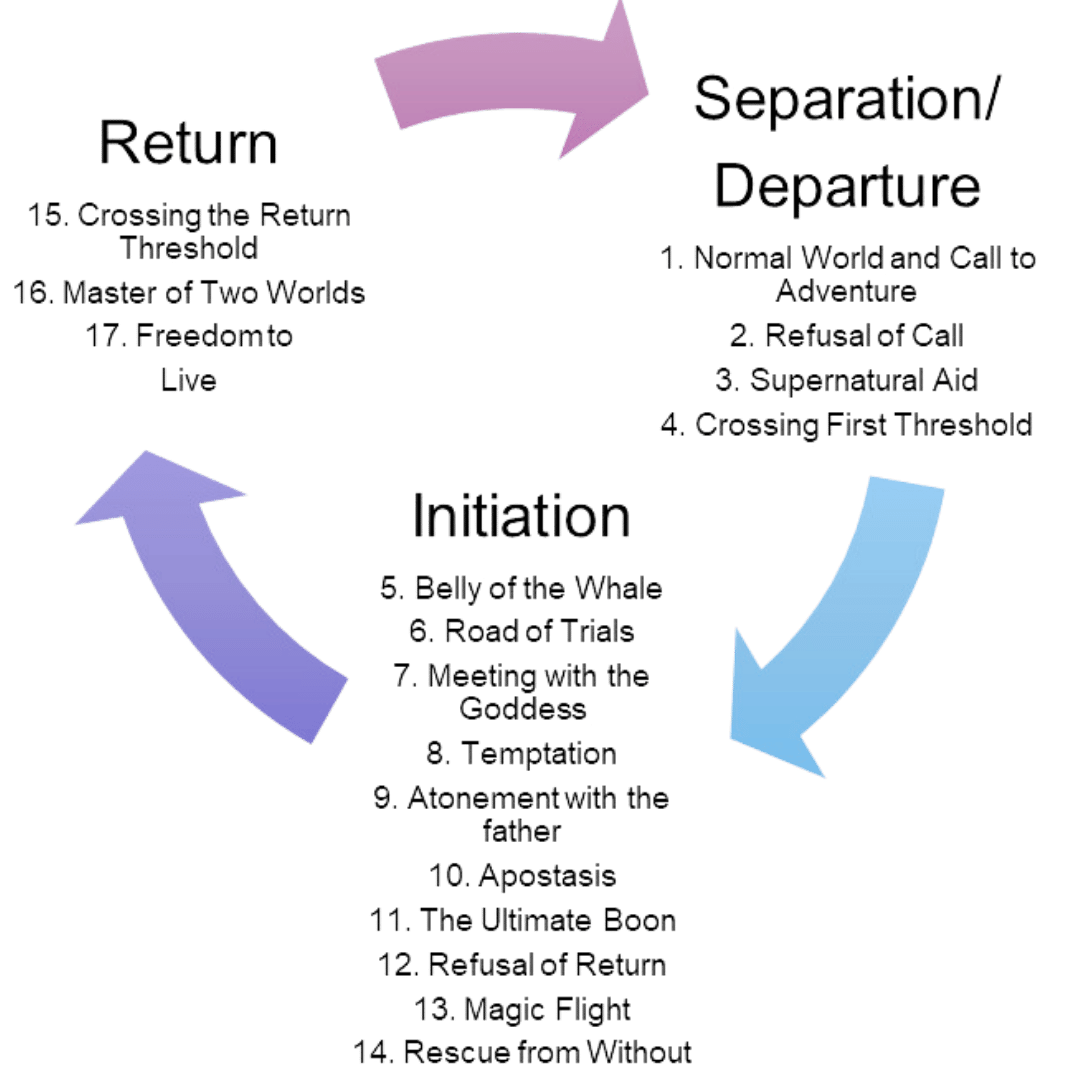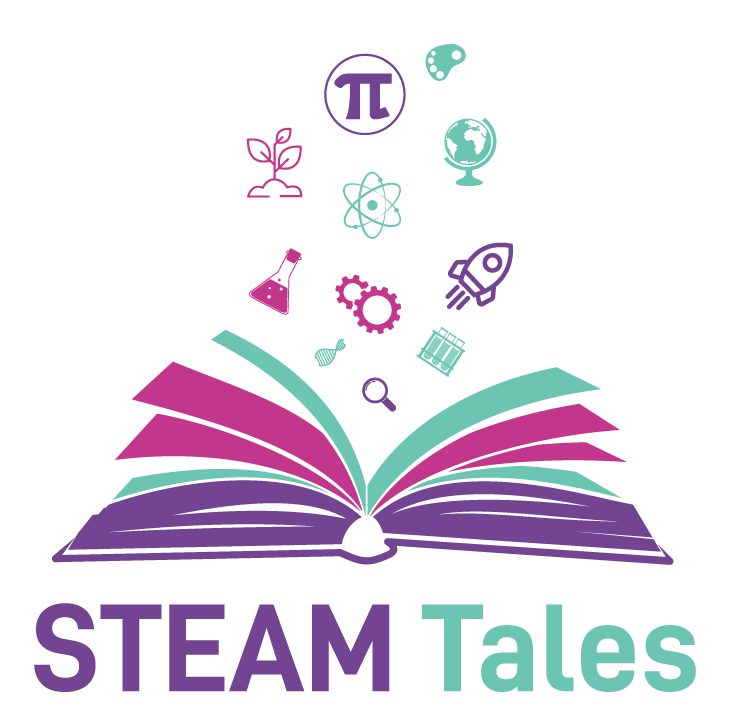Promoting STEAM in primary schools through Storytelling
- historical stories: stories such as biographical narratives of scientists and their work to stimulate children's motivation and engagement in science communication activities;
- imaginary stories: stories that illustrate the sequence of events to address scientific concepts to promote children's understanding directly;
- personification stories: stories that use certain story elements to describe scientific concepts by assigning personal characteristics to the complex concepts of a scientific field (Hu et al., 2021).
The "Hero's Journey Model" of Joseph Campbell (2008) is a storytelling model that can be used with the purpose of presenting women role models. This model, comprised by 17 typical stages divided into three acts as presented in Figure 1, intends to inspire readers by presenting a story as a hero's journey in discovering a new world. The main goals of this model are: to provide proof of the journey; to encourage change; and to achieve success (Campbell, 2008). The stories using this model may focus on only a few stages, present them in a different order or compile some of the stages in the development of the story due to their connection and similarity
In our project, we present narratives about women in STEAM fields as heroines on their journey of discovery. We intend to demonstrate the role of women in STEAM fields through the use of an engaging narrative for children and a storytelling model that focuses on an under-visible group, such as women in STEAM, who are elevated to the role of heroine and main character in the narrative. The objective of writing these stories in this format with a presentation of female role models is thereby to inspire children, particularly girls, to pursue careers in STEAM fields and to foster an early STEAM identity throughout primary education.

References
Barchas-Lichtenstein, J., Sherman, M., Voiklis, J., & Clapman, L. (2023). Science through storytelling or storytelling about science? Identifying cognitive task demands and expert strategies in cross-curricular STEM education [Original Research]. Frontiers in Education, 8.
https://doi.org/10.3389/feduc.2023.1279861
Campbell, J. (2008). The Adventure of the Hero. In J. Campbell (Ed.), The Hero with a Thousand Faces (3rd ed., pp. 49-127). New World Library.
Cohen, S. M., Hazari, Z., Mahadeo, J., Sonnert, G., & Sadler, P. M. (2021). Examining the effect of early STEM experiences as a form of STEM capital and identity capital on STEM identity: A gender study. Science Education, 105(6).
https://doi.org/10.1002/sce.21670
Engel, A., Lucido, K., & Cook, K. (2018). Rethinking Narrative: Leveraging storytelling for science learning. Childhood Education, 94(6), 4-12.
https://doi.org/10.1080/00094056.2018.1540189
Gouvêa, M., Santoro, F., Cappelli, C., Motta, C., & Borges, M. (2019). Epos: The Hero's Journey in organizations through Group Storytelling.
https://doi.org/10.1109/CSCWD.2019.8791860
Hu, J., Gordon, C., Yang, N., & Ren, Y. (2021). “Once Upon A Star”: A Science Education Program Based on Personification Storytelling in Promoting Preschool Children’s Understanding of Astronomy Concepts. Early Education and Development, 32(1), 7-25.
https://doi.org/10.1080/10409289.2020.1759011
Paiva, A., Gomes, A., Silva, V., Machado, I., & Dias, R. (2019). O storytelling e a literacia científica. Rev. Ciência Elem., 7(03:051).
https://doi.org/10.24927/rce2019.051
Prost, M., Piermattéo, A., & Lo Monaco, G. (2022). Social Representations, Social Identity, and Representational Imputation: A Review and an Agenda for Future Research. European Psychologist, 28.
https://doi.org/10.1027/1016-9040/a000489
UNESCO. (2017). Cracking the code: girls' and women's education in science, technology, engineering and mathematics (STEM).
https://unesdoc.unesco.org/notice?id=p::usmarcdef_0000253479








